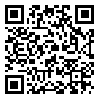Volume 17, Issue 100 (2020)
FSCT 2020, 17(100): 151-163 |
Back to browse issues page
Download citation:
BibTeX | RIS | EndNote | Medlars | ProCite | Reference Manager | RefWorks
Send citation to:



BibTeX | RIS | EndNote | Medlars | ProCite | Reference Manager | RefWorks
Send citation to:
Kolbadi Nejad M, Najafian L. Identification of Chemical Compounds and Evaluation of Antioxidant and Antimicrobial Properties of Date Plum (Diospyros Lotus) Syrup. FSCT 2020; 17 (100) :151-163
URL: http://fsct.modares.ac.ir/article-7-29599-en.html
URL: http://fsct.modares.ac.ir/article-7-29599-en.html
1- Department of Food Science and Technology, Sari Branch, Islamic Azad University, Sari, Iran
2- Department of Food Science and Technology, Sari Branch, Islamic Azad University, Sari, Iran , najafian_5828@yahoo.com
2- Department of Food Science and Technology, Sari Branch, Islamic Azad University, Sari, Iran , najafian_5828@yahoo.com
Abstract: (2590 Views)
Date Plum (Diospyros Lotus) has high health-promoting properties which they are mainly attributed to its available bioactive compounds. In present study, antioxidant and antibacterial properties of the date plum syrup was investigated and the extract compounds identified by Gas Chromatography Mass Spectrometry (GC-MS). Total phenolic and flavonoid contents and antioxidant activity of the extracts were measured. Antimicrobial activity was performed on four bacteria by disc diffusion method. The research results indicated high total phenolic and flavonoid contents of the date plum extracts. Surveying antioxidant properties of date plum extract also implicate its high antioxidant properties. DPPH radical scavenging activity of date plum extract at concentrations of 800, 400, 200, 100 and 50 micrograms/milliliter has been 82% , 61.53%, 53.51%, 32.52%, 18.31%, respectively. In investigation of antibacterial properties, the date plum syrup had high inhibiting effects on growth of different types such as Escherichia coli, Salmonella, Staphylococcus aureus and Bacillus cereus in high dilutions (50 and 100 mg/ml).. The date plum extract includes high amounts of sugar and functional components such as 5,5-Epoxymethano-2,2,6-trimethyl-7-oxabicyclo (17/77%), 2-Furancarboxaldehyde (17/01%) and 1-allyl-3-methylindole-2-carbaldehyde (11/2%).
Keywords: Date plum (Diospyros Lotus), antioxidant, antimicrobial, gas chromatography with mass spectrometry (GC-MS).
Article Type: Original Research |
Subject:
Food quality control
Received: 2019/01/20 | Accepted: 2020/04/4 | Published: 2020/05/30
Received: 2019/01/20 | Accepted: 2020/04/4 | Published: 2020/05/30
Send email to the article author
| Rights and permissions | |
 |
This work is licensed under a Creative Commons Attribution-NonCommercial 4.0 International License. |







